The Impact of Electric Vehicles on the Power Grid
Electric vehicles (EVs) have gained significant traction in recent years as a cleaner and more sustainable alternative to traditional internal combustion engine (ICE) vehicles. As the number of EVs on the roads continues to rise, concerns about their impact on the power grid have emerged.
Currently, there are 1.7 million electric cars in operation in the United States. To put this into perspective, there are almost 285 million vehicles in total on the road. Still, EV sales are growing exponentially. Additionally, many car manufacturing companies are committed to going electric. Here are a few companies that plan to only manufacture electric vehicles in the near future: Cadillac by 2030, Audi by 2033, and Chevrolet / GMC / Buick by 2035.
In 2022, more than 10 million electric cars were sold worldwide and sales are expected to grow by another 35% in 2023 to reach 14 million. This explosive growth means electric cars’ share of the overall car market has risen from around 4% in 2020 to 14% in 2022 and is set to increase further to 18% this year, 2023, based on the latest IEA projections.
Electric vehicles must “plug in” to recharge rather than going to the pump to fill up the tank with gasoline. These vehicles require frequent charging, which is typically done at home overnight. Whether at home, at work, or in a parking lot, there is a cost to charging your electric vehicle. Read more about What you need to Know about Charging Your Electric Vehicle here.
Not only is there a financial cost, but electric vehicles also pull electricity from the power grid, and some are concerned about whether the grid can handle the excess load. As EV purchases grow and manufacturers are committed to only building electric cars in the future, it’s essential to understand the potential challenges and the mitigating strategies to ensure a smooth transition toward an electrified transportation future.
The Myth of Grid Overload from Electric Vehicles
A common misconception surrounding EVs is that their widespread adoption will lead to grid overload and power shortages. Most of the U.S. electric grid was built in the 1960s and 1970s. Currently, over 70% of the U.S. electricity grid is more than 25 years old, according to the White House.
An older power grid does create some vulnerabilities, such as power outages and anticipated demand for clean energy sources like wind and solar. However, various experts argue that the concern EVs are negatively affecting the grid is largely unfounded.
For example, in California—the national leader in electric cars with more than 1 million plug-in vehicles—EV charging currently accounts for less than 1 percent of the grid’s total load during peak hours (source).
Minimizing the Impact of Electric Vehicles on the Power Grid
MIT conducted a study on how to minimize the electric vehicles impact on the grid. Researchers used data collected from two sample cities: New York and Dallas. The two problems the researchers focused on were:
- The need for costly new power plants to meet peak loads in the evening when cars are plugged in after the workday
- Overproduction of power from solar farms during the daytime can waste valuable electricity-generation capacity
The researchers found that with proper planning and smart charging solutions, the power grid can effectively accommodate a substantial increase in EVs without significant strain. Here’s how:
- Placement of charging stations for electric vehicles (EVs) in strategic ways, rather than letting them spring up anywhere.
- Workplace chargers can provide a double benefit, helping to reduce the evening peak load from EV charging and also making use of the solar electricity output. Better availability of charging stations at workplaces, for example, could help to soak up surplus power being produced at midday from solar power installations.
- Setting up systems to initiate car charging at delayed times. “It’s basically incentivizing people to begin charging later. This can be something that is preprogrammed into your chargers. You incentivize people to delay the onset of charging by a bit, so that not everyone is charging at the same time, and that smooths out the peak,” research Trancik says.
Additionally, Scientific American highlights the inherent flexibility of EV charging patterns. While EVs require charging, their demand can be managed and optimized to align with the existing load profiles. This means that EV charging can be strategically scheduled during off-peak hours or when renewable energy generation is at its peak, reducing stress on the power grid.
According to Fitzgerald, “If you told someone, ’Wait five hours to go to the gas station and you can get gas for half the price,’ nobody would think of that as an inconvenience.”
What about Texas? Can its Power Grid Handle the Growth of Electric Vehicles?
The power grid in Texas has been independent since its creation. When President Franklin D. Roosevelt passed the Federal Power Act in 1935, which regulated any electric company operating across state borders, Texan energy companies decided to operate without interstate connections to avoid regulation.
If demand on Texas’s grid exceeds its capabilities, it cannot borrow power from other states. That’s why it’s vital to ensure the growth of electric vehicles won’t overwhelm the state’s grid.
However, the Texas power grid can handle drivers’ impact with electric cars. One benefit is that the ERCOT (Electric Reliability Council of Texas, Inc.) invests money and infrastructure to cover the hot Texas summer afternoons. Since electric vehicles usually charge at night when the demand is lower, there is unused capacity. EVs won’t strain the system the way some assume.
Additionally, it’s important to remember the percentage of EV cars on Texas roads is minimal compared to traditional gas vehicles. The Texas power grid has time to prepare for the adoption of electric vehicles to outpace gas cars.
Mitigating Strategies for Grid Integration
A range of strategies can be employed to integrate EVs into the power grid effectively. Similar to the study MIT researchers conducted, The National Renewable Energy Laboratory (NREL) also has outlined several key recommendations.
Deploying advanced metering infrastructure and smart charging technologies can enable real-time communication between EVs and the grid, allowing for optimized charging and load balancing.
Time-of-use pricing encourages EV owners to charge their vehicles during off-peak hours, rewarding them with lower rates. And vehicle-to-grid or vehicle-to-home technology can allow certain EVs to sell electricity from their battery back to the grid during times of need or to power a home during an outage.
Demand response programs can incentivize EV owners to charge during non-peak hours, reducing the strain on the grid. These programs can employ time-of-use pricing or incentivize EV owners to participate in vehicle-to-grid (V2G) programs, where EVs can supply energy back to the grid during peak periods.
Managed charging, for example, allows utilities to remotely start or stop vehicle charging to accommodate grid conditions with the vehicle owner’s consent. It can be particularly useful for companies operating many electric vehicles that need to be charged but not all at once.
Grid operators can benefit from accurate forecasting models that anticipate EV charging patterns and adjust energy generation and distribution accordingly. Such predictive modeling can help grid operators maintain stability and minimize disruptions (source).
Collaborative Approach for a Sustainable Future
Over the next several decades, however, the energy pull on the grid will increase significantly, as will demand from other electric sources as the country weans itself off of fossil fuels. Utilities are aiming to boost their capacity by adding clean energy sources, expanding battery storage, and building transmission lines.
“The grid can handle it, we’re taking the necessary steps, but we’re just at the very beginning of putting those processes and programs in place,” Garrett Fitzgerald, senior director for electrification at the Smart Electric Power Alliance, said. “A future grid will absolutely be able to handle a future demand of transportation electrification.”
EVs can have a symbiotic relationship with renewable energy sources if properly integrated into the grid. They can act as mobile storage devices, enabling the grid to utilize excess renewable energy during periods of low demand, ensuring efficient energy utilization (source).
The successful integration of EVs into the power grid requires a collaborative effort involving various stakeholders. Utilities, automakers, policymakers, and consumers must work together to develop cohesive strategies that prioritize grid stability, renewable energy integration, and consumer convenience.
Policymakers play a crucial role in incentivizing the adoption of EVs and promoting the development of charging infrastructure. By implementing favorable policies, such as tax credits, grants, and regulations that encourage the deployment of EV charging stations, governments can facilitate the growth of EVs while ensuring grid reliability.
Contrary to popular belief, the widespread adoption of electric vehicles is unlikely to overload the power grid. With the implementation of intelligent charging solutions, time-of-use pricing, demand response programs, and collaborative efforts among stakeholders
Sources
What our customers are saying
See why our power customers say we're the best electricity provider in Texas!
I was worried about getting electricity for my home through a prepaid company. I was calling around to see different rates then going through all the hassle of credit checks while dropping points each…
I have been with this company for several years and have been very happy since. Even when I moved, they made my usually stressful situation very easy and carefree. I recommend them to everyone that I…
I have enjoyed the service for 2 years now. In the beginning this service was planned to be temporary but with the service being so effective for me i decided to keep it for the long haul. I’m a happy customer.









